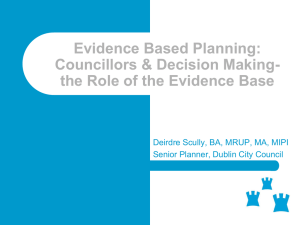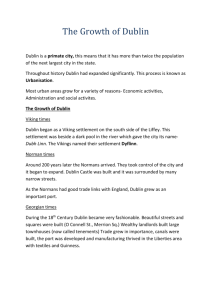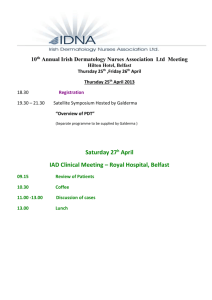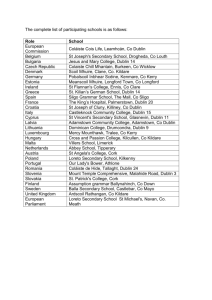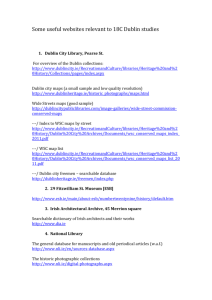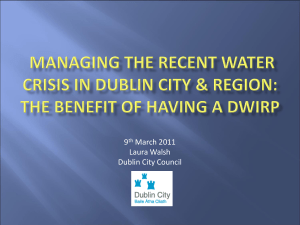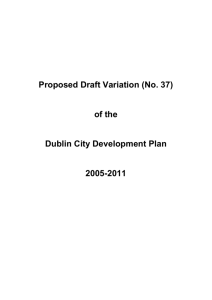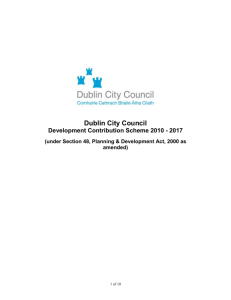Introduction - Lambstongue
advertisement
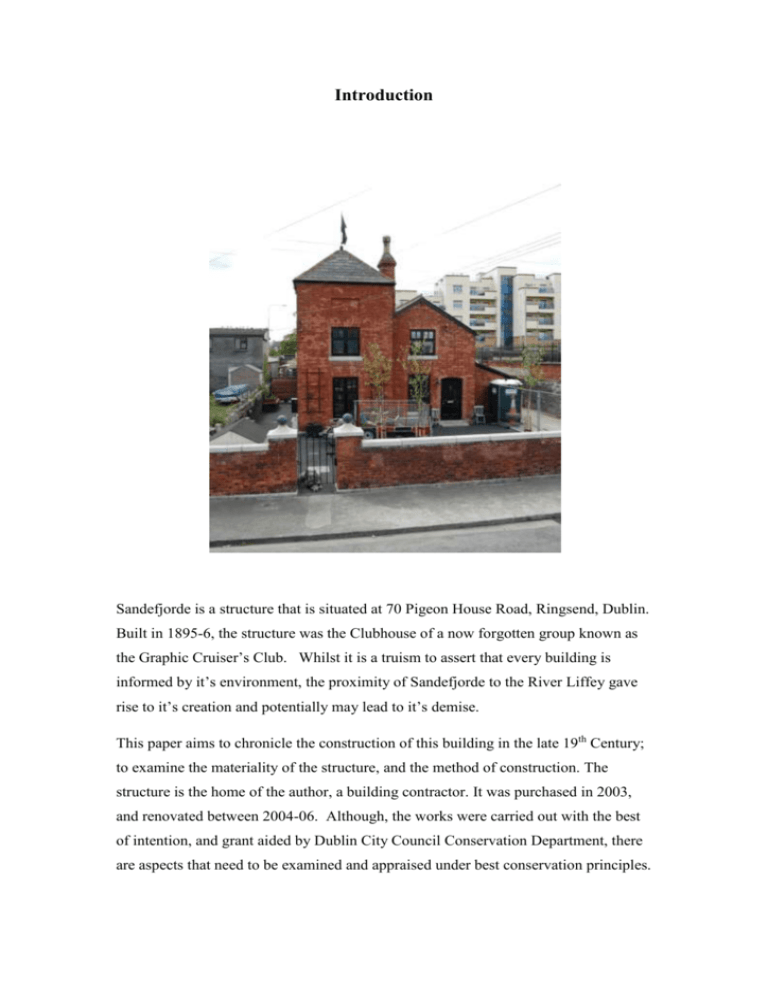
Introduction Sandefjorde is a structure that is situated at 70 Pigeon House Road, Ringsend, Dublin. Built in 1895-6, the structure was the Clubhouse of a now forgotten group known as the Graphic Cruiser’s Club. Whilst it is a truism to assert that every building is informed by it’s environment, the proximity of Sandefjorde to the River Liffey gave rise to it’s creation and potentially may lead to it’s demise. This paper aims to chronicle the construction of this building in the late 19th Century; to examine the materiality of the structure, and the method of construction. The structure is the home of the author, a building contractor. It was purchased in 2003, and renovated between 2004-06. Although, the works were carried out with the best of intention, and grant aided by Dublin City Council Conservation Department, there are aspects that need to be examined and appraised under best conservation principles. Central, to the appraisal of Sandejforde, are the materials that are salvaged from seagoing vessels of the period. Local people had spoken of the providence of stairs. It was believed that it was from a ship. Indeed, the panelling around the stairwell was supposed to have been salvaged. Anecdotal evidence, though none of it concrete, links the salvage to the shipwreck of the Palme, a Finnish Down Easter that ran aground in Dublin Bay on Christmas Eve 1895. The house was constructed for George Prescott, whose name appears on the deeds, and who is listed as one of the Honorary Secretary’s of the Graphic Cruiser’s Club in the 1895 edition of Thom’s Directory. However, the name “Sandejforde” remains a mystery. Was there a connection to the Finnish vessel? Indeed the Scandinavian connection remains throughout the life span of the building. It was another Scandinavian, Brigetta Pierre, who bought the building from the developer, Tom Roche, in 1994, after Roche had annexed the garden to facilitate access to the East Link Bridge. It was Pierre who applied for Protected Structure status for the building. It is however, most poignant, to note that it is the proximity of Sandefjorde to the Liffey, in the heart of Dublin Port, that potentially may lead to the destruction of the structure. In the 2007, Eastern Bypass proposal, the building is scheduled to be demolished in two out of four of the proposed schemes, to facilitate a bridge or tunnel crossing the Liffey. This paper aims to chronicle the site on which Sandefjorde was built. In 1715, the City Assembly approved the Ballast Office Committee’s plan to create an embankment, from wooden piles and dredged material, southeast of Ringsend to the Poolbeg [Small Pool]. Throughout the Eighteenth and Nineteenth centuries, this embankment was gradually consolidated and fortified. The whole structure was known as the South Wall, however, subsequent to the building of the blockhouse in 1760 halfway between Ringsend and the Poolbeg lighthouse, and the entrepreneurial ventures of John Pidgeon, the road became known as the Pidgeon House Road, and subsequently, the Pigeon House Road. It was, essentially, on this consolidated embankment, beside the Coastguard Station of 1877-8, that Prescott and the Graphic Cruiser’s built their Clubhouse in 1895-6. With the exception of the construction of the Dublin Corporation Main Drainage Pumping Station immediately to the west, opened in 1906, there was little alteration to this quiet finger of land until the mid 1960’s, when Dublin Port commenced the construction and reclamation of the South Quays, directly to the north of the building. Immediately to the south, dumping and reclamation had intensified from the 1940s on about twenty acres of land next to Ringsend Park. Thus from the 1960s to the present, Sandejforde and its “sister dwelling”, the Coastguard Station, have been annexed from all sides. Since the early 1990s, Dublin Port’s unitised container facility has operated from the South Quay, directly to the north of Sandejforde. Huge gantry cranes now dominate the environment and the increased volumes, and the attendant noise, have had a real and detrimental effect on the living conditions of the residents of this section of Pigeon House Road. In the past number of years, the operations have moved to 24 hours. It is probable that the residents will no longer be able to live in Sandefjorde or the Coastguard Station in the future, and in all probability, the houses will be purchased by the State for the Eastern Bypass or the Port. The aim of this paper is to demonstrate how Sandefjorde was developed to gain access to the sea, using salvage from the sea, and yet how the industrialization of the sea has gravely impacted on its amenity and future residential use. Essentially to show why it was built, how it was built and why that which was built around it, has gravely undermined its function.

